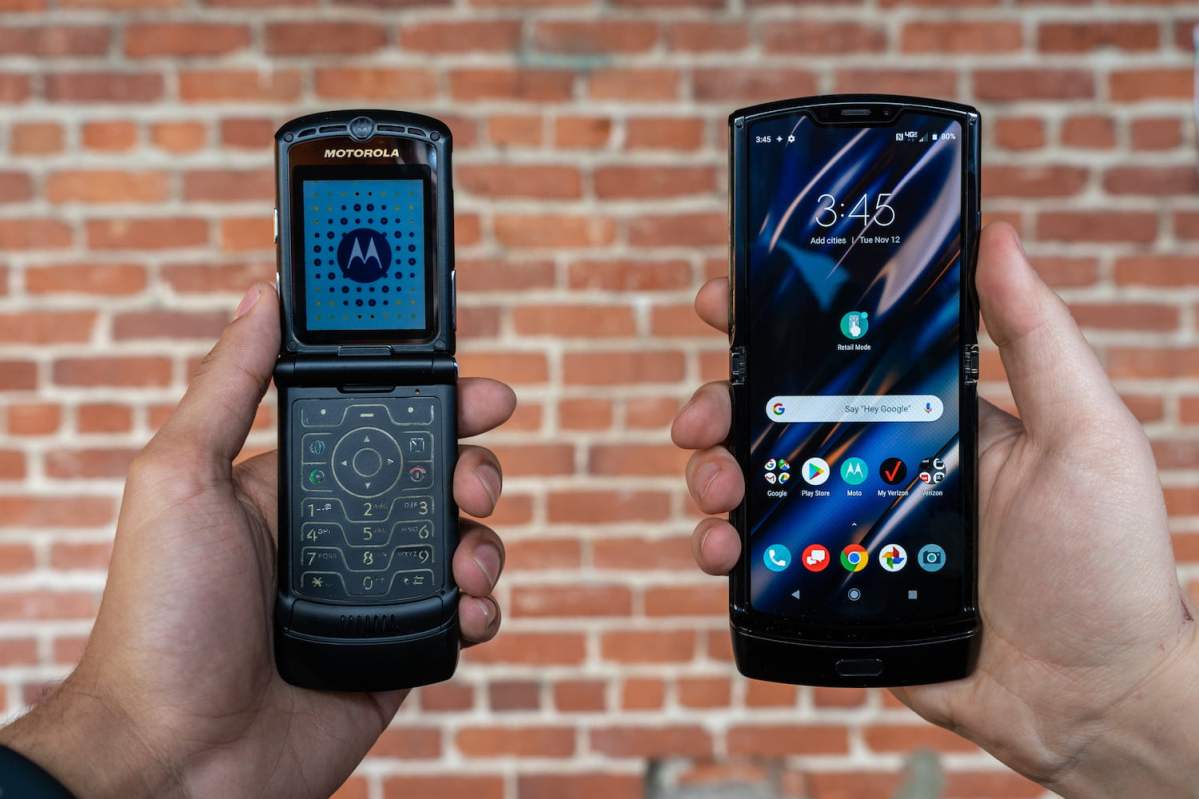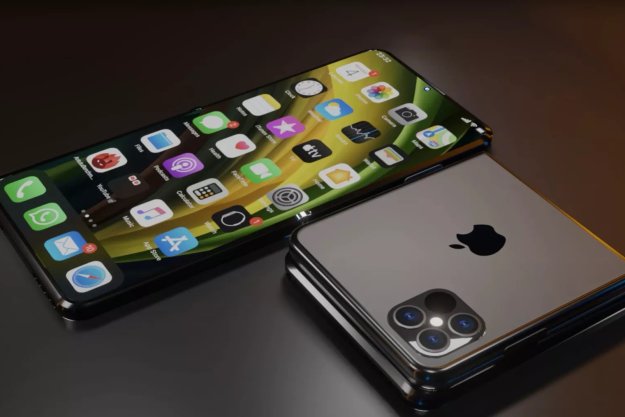The jury is still out on whether folding phones are truly the future, but Motorola’s revamped Razr has certainly thrown more fuel on the fire. Bathed in the warm glow of nostalgia, this stylish design harks back to past glories, and points forward to a new possible direction for smartphone design. I think the Motorola Razr is the most exciting unveil from Motorola in years. It’s a stunning device with some seriously tempting highlights, but there are disappointments here too. In fact, it’s a strangely mixed bag.
Here’s what I like about and don’t like about Motorola’s new phone.
I like the look

I still have my black Razr V3 flip phone languishing in a drawer somewhere, incapacitated by a broken exterior screen. Motorola has done a good job of resurrecting that iconic design and putting a modern twist on it. The new Motorola Razr is unmistakably part of the same family, but it manages to look modern. The line of the curves, the chin at the bottom, and the position of the hinge all mirror the original. It’s even about the same height folded open, and a similar thickness when shut, though the new Razr is much wider to accommodate the kind of screen real estate we demand nowadays. There’s enough about it to trigger that nostalgia buzz, but it’s also fresh enough to separate itself from the current crop of phones in a fashion-forward way. Though they’re very different devices, the Motorola Razr looks even more stylish than the Samsung Galaxy Fold.
I don’t like the small battery
The Motorola Razr has two batteries inside, but taken together they’re rated at 2,510mAh. That’s not a lot of power. The woefully-short-on-stamina Pixel 4 has a 2,800mAh battery inside. Now, the Motorola Razr doesn’t have as many tricks up its sleeves, and some of the time you’ll be using the much smaller outer display, but it’s still likely to have limited battery life. The decision to go with that capacity was no doubt made to accommodate the design more than anything else, and that can be a recipe for poor battery performance.
I like the folding action

Why do we love folding tech so much? There was a mini flip phone revival a while back that seemed to be largely based on how much people miss being able to flip their phones open and closed. The folding action has been the topic of much excitement in the new wave of folding phones, too — though in the case of the Galaxy Fold, it caused major delays. No one wants to see a visible fold in the screen or have a mechanism that’s prone to breaking. The Motorola Razr has two big advantages in that regard. I can’t speak to longevity, but the mechanism uses a clever design that produces no crease in the screen. At first glance, it looks like a better folding screen than Samsung’s but Motorola has been a bit cagey with details on how long this should last, whereas Samsung was very specific about the life span of the Galaxy Fold’s hinge.
I don’t like the camera
Motorola’s cameras are often middle of the road, but even its budget releases have at least two lenses in the main camera. The Motorola Razr has a 16-megapixel single lens with an aperture of f/1.7, and it relies on electronic image stabilization. There’s also a basic 5-megapixel selfie camera. Without even testing it, it’s safe to say it won’t make the best camera phones list. If you’ve grown used to iPhone-level photography, or you picked a Pixel for the camera, then the Motorola Razr will feel like a major step down.
I like the screen

The phone has a 6.2-inch pOLED screen with a resolution of 2,142 x 876 pixels. It’s sharp, offers great contrast with deep blacks, and there’s no crease where it folds. Interestingly, Motorola was tight-lipped about the manufacturer of this flexible, plastic OLED display, but it looks great and it’s an adequate size. The outer display is 2.7-inches with a resolution of 800 x 600 pixels, and it’s also an OLED, but covered in glass rather than plastic. It seems as though it will serve just fine for notifications and basic tasks. If you see an email you want to reply to, you can use quick replies or voice dictation to respond with the phone closed, or flip the Razr open and have a seamless transition to a full-screen experience.
I don’t like the processor
Why would you put Qualcomm’s Snapdragon 710 processor in an expensive phone like this? It’s paired with an ample 6 GB RAM and 128 GB storage, but it can’t keep up with the current flagship Snapdragon 855, which is around 20% faster according to the benchmarks. The Razr always prioritized its looks — even back in the flip phone days, it had lower specs than similarly priced options — so perhaps this isn’t a deal breaker for Razr fans. Motorola opted for this chip to limit the power and heat dissipation required with a smaller battery and form factor, respectively. It’s a tough break to get anything less than top-tier silicon on a phone that costs $1,500.
I like the size

The quest for an ever-bigger screen has been pretty relentless. It’s pushed us toward a situation where many mainstream flagship phones are bigger than devices that were considered phablets just a few years ago. No one really makes small phones anymore, but our pockets and hands haven’t grown with the trends. While Samsung and Huawei’s foldable phones start with smallish phones that unfold to tablet sizes, Motorola is aiming for the convenience of portability. Everyone craving an easier-to-handle device, but not keen on giving up the large screen, is going to be taking a look at the Motorola Razr.
I don’t like the price
New categories are going to be expensive, so the $1,500 price tag on the Motorola Razr wasn’t a big shock, but given the weaknesses here, it seems about $500 too high. The Samsung Galaxy Fold is packed with top-notch hardware, boasts a 4.6-inch outer screen, and folds open to a 7.3-inch display, but at almost $2,000, I still wouldn’t buy one. If the Motorola Razr was around $1,000, I think more people would bite, but at $1,500 with Verizon exclusivity, the audience is going to be limited.
Editors' Recommendations
- This Android phone is so bad I couldn’t review it
- I turned my phone into a camera, and I don’t want to go back
- What they don’t tell you about wearing a camera on your face
- I used Motorola’s futuristic folding phone, and it’s truly crazy
- Motorola phones are about to steal these iPhone features

